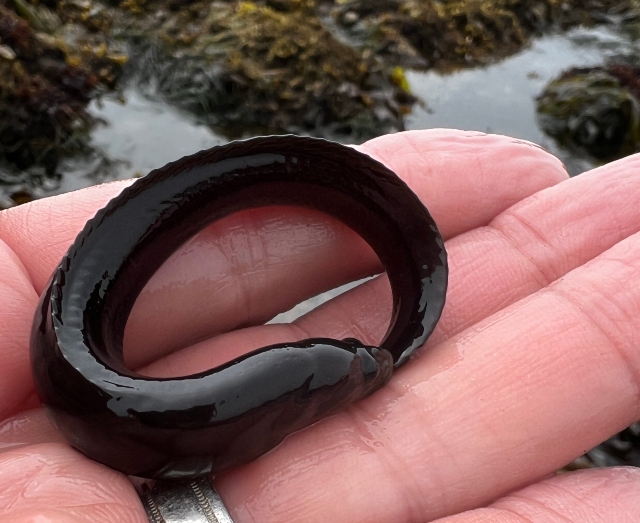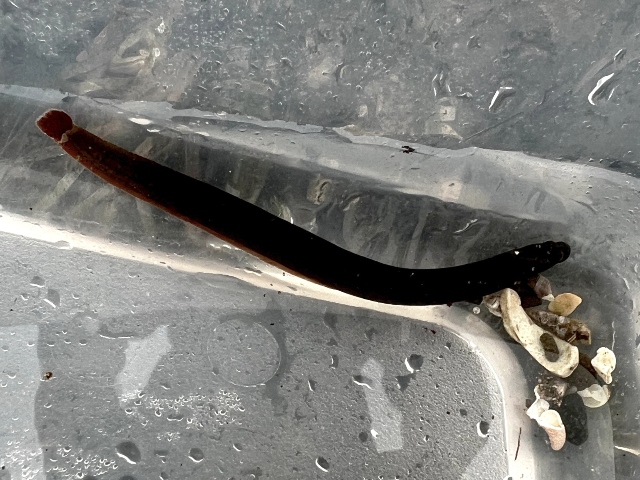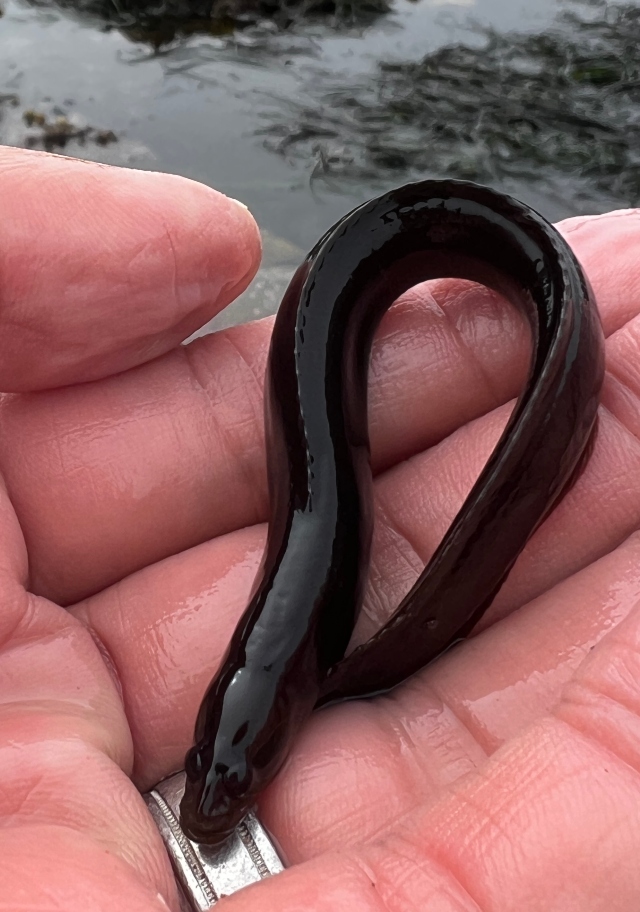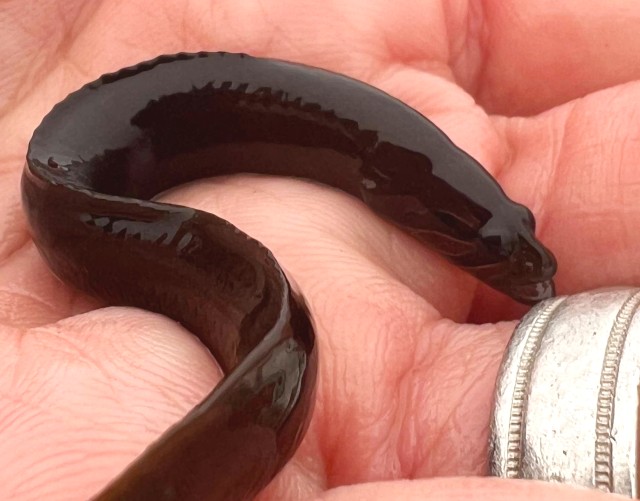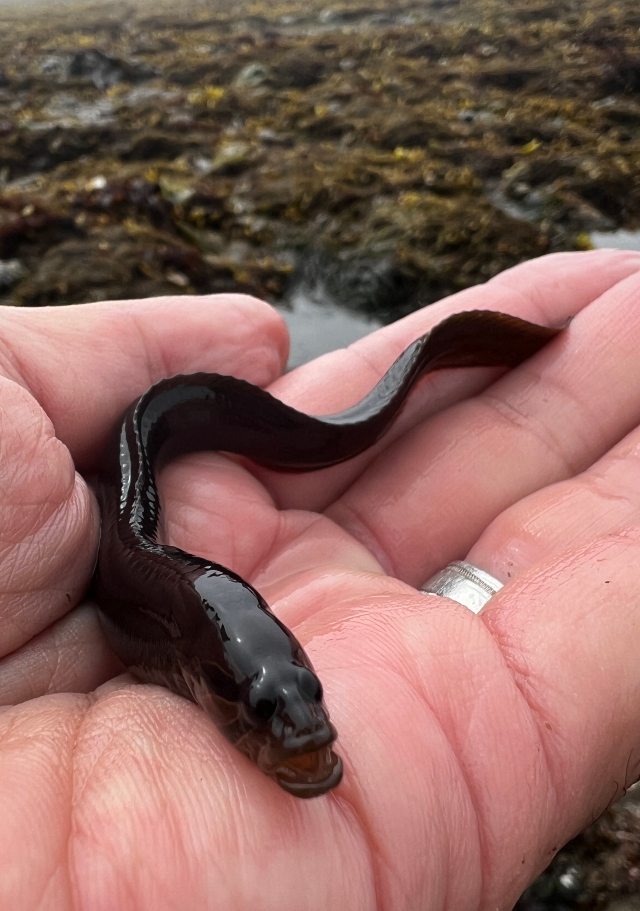I caught this super cool creature while tidepooling on the California Coast. The Black Prickleback has an elongated eel-like body and is dark reddish brown to black in color with a pale head.
The head is small with two distinctive dark bands radiating from each eye. It has a long dorsal fin that runs into its tail fin giving the illusion of having a full-body fin. It grows to about a foot in length.
This fish prefers to live in rocky terrain with algae cover. It can be found under rocks and gravel; smaller examples are commonly found in tidepools. They are capable of breathing air and can be out of water for up to a day. When not submerged under water, they keep moist by burrowing under seaweed and wet rocks.
The Black Prickleback is found mostly on coastlines from the Gulf of Alaska to southern California, where it consumes green and red algae, crustaceans, polychaetes, snails and surfgrass.
Spawning takes places from February to April off the west coast of the United States and from April to mid-May off the coast of British Columbia. Females lay 700 to 4000 eggs under rocks or other protected areas. The eggs are deposited one by one and fertilized by the male. They are then shaped into spherical clusters by the mother and father. The father then guards the eggs until they hatch.
Pricklebacks belong a family of elongate fishes found in the cool northern oceans, with most species in the northern Pacific. In most species, all the dorsal rays are strong, sharp spines – which is the source of the common name “Prickleback.”


